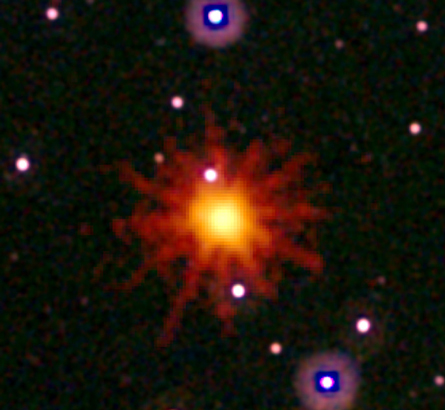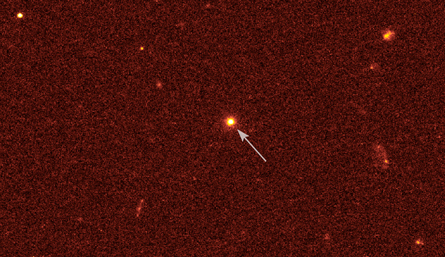Astronomers have witnessed a cosmic explosion so strange they don’t even know what to call it. Although the blowup, discovered with NASA’s Swift satellite on March 28, emits high-energy radiation like a gamma-ray burst would, the event has now lasted for 11 days. Gamma-ray bursts last for an average of about 30 seconds.


Also unlike a gamma-ray burst, the explosion has faded and brightened, emitting staccato pulses of energetic radiation lasting for hundreds of seconds.
“It’s either a phenomenon we’ve never seen before or a familiar event that we’ve never viewed in this way before,” says Andrew Fruchter of the Space Telescope Science Institute in Baltimore. The outburst might have been generated by a star torn to shreds when it ventured too close to a black hole in its host galaxy, he suggests. Gas from the star falling into the black hole could have triggered the gravitational monster to emit a jet of X-rays and gamma rays that by chance happens to point directly at Earth.
A radio-wavelength image taken March 29 along with a Hubble Space Telescope image taken in visible light on April 4 supports that model. The images show that the explosion took place 3.8 billion light-years from Earth, at the center of a galaxy where a supermassive black hole would lie. It’s also possible that the star might have been ripped apart by a smaller black hole, Fruchter notes.
“Tidal disruption of a star by a black hole seems very plausible,” says Andrew MacFadyen of New York University. The blast’s duration “is much longer than anything we’d naturally expect from [explosive] collapse of a single star,” which is the traditional model for producing a gamma-ray burst, he says.
But Stan Woosley of the University of California, Santa Cruz says the event might be explained by the gravitational collapse of a giant star into a black hole, a scaled-up version of the process that usually produces a gamma-ray burst. In Woosley’s scenario, the core of the giant star collapses to form a black hole but it takes days for the outer layers to fall in and emit radiation, accounting for the unusually long duration of the observed explosion.







